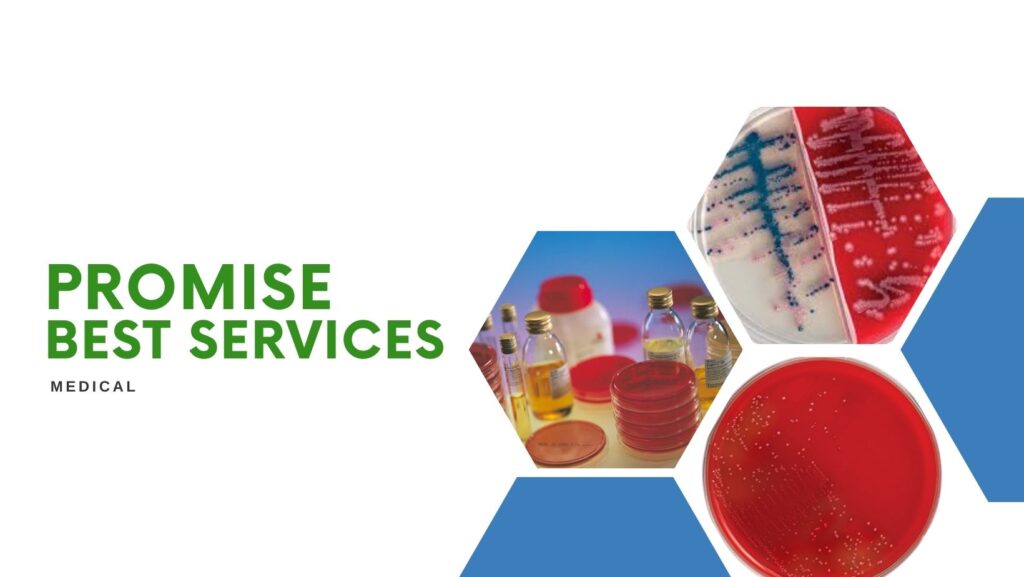
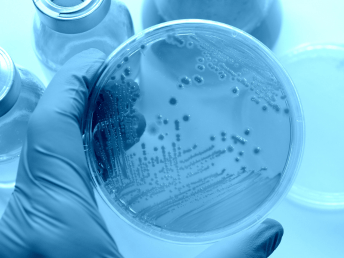
C.L.E.D. Agar w/Bromothymol Blue
Cystine-Lactose-Electrolyte-Deficient medium, is a differential medium used for the isolation and enumeration of bacteria from urine. It supports the growth of urinary pathogens and gives good colonial differentiation without the spread of Proteus species due to its lack of electrolytes.
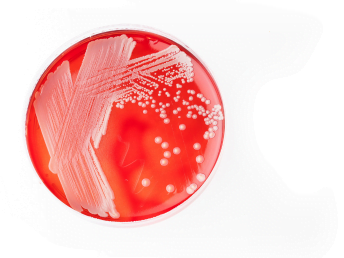
Columbia Sheep Blood Agar
Columbia sheep blood agar is a general-purpose medium for the isolation and cultivation of non- fastidious and fastidious organisms as well as permits the detection of hemolysis and provides heme (X factor), which is required for the growth of many bacteria. Columbia Blood Agar is also appropriate for the cultivation of anaerobic bacteria or yeasts.

CNA Agar with 5% sheep Blood
Columbia agar base is a nutritionally rich formula containing three peptone sources and sheep blood. CNA refers to the antibiotics Colistin (C) and Nalidixic acid (NA) that are added to the medium to suppress the growth of most gram-negative organisms while allowing gram-positive bacteria to grow.

Chocolate Agar
Chocolate agar is a nonselective, enriched medium used for isolation of pathogenic bacteria. Chocolate agar is used for growing fastidious bacteria, such as H. influenzae and N. meningitidis. H. influenzae, need growth factors nicotinamide adenine dinucleotide (NAD) & hemin (factor X).
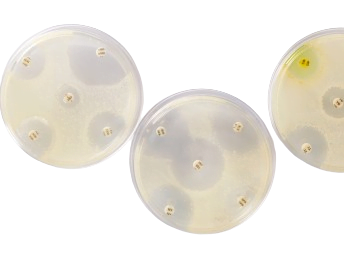
Mueller Hinton Agar
Mueller Hinton Agar is a standardized solid medium recommended for the study of the susceptibility of bacteria to antimicrobial agents by the method of diffusion (Kirby-Bauer method) or dilution in agar.

Sabouraud Dextrose Agar (Plate)
XLD agar is selective and differential for Shigella spp. and Salmonella spp. The salt, sodium deoxycholate, inhibits many gram-negative bacilli that are not enteric pathogens and inhibits gram positive organisms. A phenol red indicator in the medium detects increased acidity from carbohydrate fermentation. Shigella spp., do not ferment these carbohydrates, so their colonies remain colorless. Salmonella spp. developed black center colonies due to H2S production.

Xylose Lysine Deoxycholate Agar (XLD)
XLD agar is selective and differential for Shigella spp. and Salmonella spp. The salt, sodium deoxycholate, inhibits many gram-negative bacilli that are not enteric pathogens and inhibits gram positive organisms. A phenol red indicator in the medium detects increased acidity from carbohydrate fermentation. Shigella spp., do not ferment these carbohydrates, so their colonies remain colorless. Salmonella spp. developed black center colonies due to H2S production.

Hektoen Enteric Agar
Hektoen enteric agar is a selective and differential medium for enteric pathogens such as Salmonella and Shigella species. The presence of thiosulfate or ferric ammonium citrate in the medium produces a black precipitate in the presence of H2S, allowing Shigella – which does not produce H2S, and appears as green colonies – to be distinguished from Salmonella – which does produce hydrogen sulfide and appears as black colonies.

Thiosulfate Citrate Bile Salts-Sucrose Agar (TCBS)
TCBS agar is highly selective for the isolation of V. cholerae and V. parahaemolyticus as well as other Vibrio species. Vibrio cholerae usually has yellow colonies and Vibrio parahaemolyticus has green colonies. TCBS agar contains high concentrations of sodium thiosulfate and sodium citrate to inhibit the growth of Enterobacteriaceae. The alkaline pH of the medium enhances the recovery of Vibrio species.

Deoxycholate Citrate Agar (DCA)
DCA is used for the isolation and maximum recovery of intestinal pathogens such as Salmonella and Shigella groups. The selectivity of this medium permits the use of fairly heavy inoculam without danger of overgrowth of Shigella and Salmonella by other microflora. Citrate salts and Sodium deoxycholate at pH 7.3 to 7.5 is inhibitory for gram positive bacteria and most other normal intestinal organisms.

Soyabean Casein Digest Agar (Tryptone Soya Agar)
SCDA used in validation of sterility checking procedure in accordance with the microbial limit testing. The combination of tryptone and soya peptone makes these media nutritious by providing amino acids and long chain peptides for the growth of microorganisms. Natural sugars of soy enhance growth of microorganism. Sodium chloride maintains the osmotic balance in the medium.

Brain Heart Infusion Broth (BHI)
Brain Heart Infusion Broth is recommended for the cultivation of various fastidious, pathogenic microorganisms, including yeasts and molds. The media is nutritious and well-buffered to support the growth of a wide range of microorganisms such as Streptococci, Pneumococci, Meningococci, etc. The media is especially suited for the cultivation of Staphylococci for the plasma coagulase test and setting up blood cultures.

Thioglycollate Broth (TG Broth)
Thioglycolate broth (TGB)
Thioglycolate broth is used for the cultivation of aerobic and anaerobic microorganisms in sterility tests and to determine the oxygen requirements of the microorganisms. It is the most frequently used medium in diagnostic bacteriology. When an anaerobic infection is suspected, thioglycollate medium is recommended to isolate strict anaerobes from the blood. This medium does not require an anaerobic container or a special seal for the cultivation of anaerobes. The sodium thioglycolate in the medium consumes oxygen and allows the growth of obligate anaerobes.

Selenite F Broth
Selenite-F Broth was devised by Leifson, who demonstrated that selenite was inhibitory for coliforms and certain other microbial species, such as fecal streptococci, present in fecal specimens, and thus, was beneficial in the recovery of Salmonella species. He found that the inhibited strains would eventually breakthrough, but if subcultures were made from the enrichment broth after 4-8 h incubation, the isolation of Salmonella was possible without overwhelming growth of many members of the intestinal flora.

Nutrient media
Nutrient agar is a general purpose medium that supports the growth of a wide range of non-fibrous organisms. Nutrient agar is popular because it supports the growth of various types of bacteria and fungi, and contains many of the nutrients necessary for the growth of bacteria.

10. Sabouraud Dextrose Agar (SDA)- Slant
SDA is a selective media for fungal culture and primarily used for the isolation of Dermatophytes, yeasts and various other pathogenic and non-pathogenic fungi. Dermatophytes are a group of closely related fungi that can invade keratinized tissue such as skin, nails and hair of humans and other animals. SDA also supports the growth of filamentous bacteria such as Nocardia spp.

Sabouraud Dextrose Agar with Chloramphenicol- Plate
SDA with Chloramphenicol is recommended for cultivation of yeasts and moulds associated with skin infections. The medium is often used with antibiotics such as Chloramphenicol for the isolation of pathogenic fungi from materials containing large numbers of fungi or bacteria.
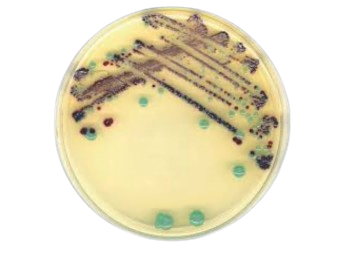
UTI Chrom Agar
UTI Chrome Agar used for presumptive identification and confirmation of microorganisms mainly causing urinary tract
infections, can also be used for testing water, food, environmental and other clinical samples.

MRSA Detection Chrome Agar
Recommended for Rapid isolation and identification of Methicillin Resistant Staphylococcus aureus. The chromogenic mixture incorporated in the medium is specifically cleaved by Staphylococcus aureus (MRSA) to give greenish yellow coloured colonies.

VRE Detection Chrom Agar
Recommended for selective isolation and differentiation of Vancomycin Resistant Enterococcus faecalis and Enterococcus faecium from clinical samples. VRE can be transmitted from person to person, especially in a hospital. Enterococcus faecium ferments arabinose and cleaves the substrate thereby producing green colonies with yellow background. Enterococcus faecalis does not ferment arabinose thereby producing blue colonies due to cleavage of chromogenic substrate.

CRE Detection Chrom Agar
CRE Detection Agar Base is a chromogenic medium designed for the detection and differentiation of Carbapenemase producing Enterobacteriaceae species. E.coli resulting in pink to purple coloured colonies, K. pneumonia producing metallic blue coloured colonies. Pseudomonas species produce colourless colonies or may produce with light greenish pigment. Isolates should be tested further for Carbapenem susceptibility following CLSI guidelines.

ESBL Detection Chrom Agar
Recommended for the detection of Extended Spectrum β-Lactamase-producing organisms. ESBL producing E.coli grow as either pink or purple colonies. ESBL producing members of the KESC group produce bluish green colonies; Proteus, Morganella and Providencia do not utilize any chromogen resulting in colourless to light brown colonies.

Sabouraud Dextrose Agar with Chloramphenicol- Slant
SDA with Chloramphenicol is recommended for cultivation of yeasts and moulds associated with skin infections. The medium is often used with antibiotics such as Chloramphenicol for the isolation of pathogenic fungi from materials containing large numbers of fungi or bacteria.

ESBL Detection Chrom Agar
Recommended for the detection of Extended Spectrum β-Lactamase-producing organisms. ESBL producing E.coli grow as either pink or purple colonies. ESBL producing members of the KESC group produce bluish green colonies; Proteus, Morganella and Providencia do not utilize any chromogen resulting in colourless to light brown colonies.
